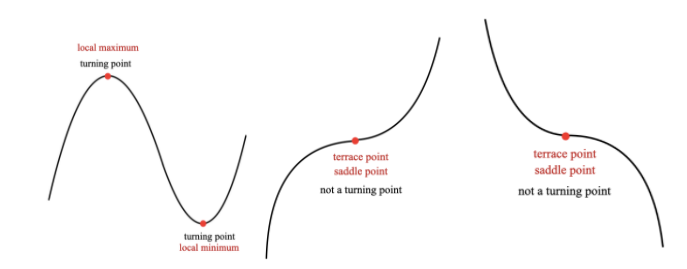
Graphs of polynomials
THIRD-DEGREE POLYNOMIALS
The graph shows the polynomial [math]p\left(x\right)=a_3x^3+a_2x^2+a_1x+a_0[/math]. Investigate how the coefficients affect the shape of the graph.
TIP: How to effectively work with sliders.
Start by moving only the slider [math]a_3[/math] and observe how the graph changes. Then return its value back to 1.[br][br]Move the slider [math]a_2[/math]. What happens with the graph? When finished, set it back to 0.[br][br]Change the value of [math]a_1[/math]. Observe. Return to 0.[br][br]Move the slider [math]a_0.[/math].[br][br]Once you tried sliders individually, you can investigate what happens when you change more coefficients at the same time.
Leading coefficient
Describe how the value of [math]a_3[/math] affects the graph of a third-degree polynomial.
Constant coefficient
What point does the coefficient [math]a_0[/math] represent on the graph?
As you are changing the coefficients, the graph of a third-degree polynomial is also changing.[br][br]However, there are certain patterns that can be generalized for all third degree polynomials. [br][br]Use the applet to describe possible cases of graphs and answer the following questions.
Zeros (x-intercepts)
How many zeros can a third-degree polynomial have? Consider all possible cases.
Turning points and terrace points

Turning points
What is the MAXIMUM NUMBER of turning points that a third-degree polynomial can have? [br](Turning point: local minimum or local maximum)
Terrace points
What is the MAXIMUM number of TERRACE POINTS that a third-degree polynomial can have?
FOURTH-DEGREE POLYNOMIALS
You will now be investigating graphs of fourth-degree polynomials. [br][br]Read the tip about working with the sliders.
Zeros
How many zeros can a fourth-degree polynomial have?
Turning points
What is the MAXIMUM NUMBER of turning points that a fourth-degree polynomial can have? [br](Turning point: local minimum or local maximum)
Terrace points
What is the MAXIMUM number of terrace points that a fourth-degree polynomial can have?
Higher-degree polynomials
The following applet allows you to analyze also some higher degree polynomials. [br][br]Your goal is to derive a general rule about the number of zeros and turning points of an n-th degree polynomial - see statements below.
GENERAL RULE about the number of ZEROS of a polynomial of n-th degree.
Complete the statement: [br][br]Polynomials of degree [math]n[/math] have at most ......... real zeros.
GENERAL RULE about the number of TURNING POINTS of a polynomial of n-th degree.
Complete the statement.[br][br]Polynomials of degree [math]n[/math] have at most ....... turning points.